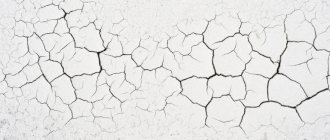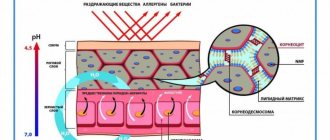What is pallor and weakness
Such a condition may well indicate not only harmless overwork, but also heart disease. Hypertension, arrhythmia, tachycardia, angina pectoris, myocarditis and even myocardial infarction - with these pathologies, pallor and weakness are almost always encountered.
This video will tell you what pallor and weakness are, and why a sufficient level of iron in the body is so important:
How to get rid of pallor
Healthy skin color is an indicator of the health of the entire body. Cosmetics can only mask a pale complexion, but this will not solve the problem of physical condition. If a medical examination does not reveal any ailments, you can restore a healthy complexion on your own. Playing sports will help with this. Physical exercise improves blood circulation and restores the functioning of the cardiovascular system. This means that in a couple of weeks your complexion will return to normal. If you are worried about a pale face, the reasons for which are a heavy lunch and slight dizziness, try to lie down. In this case, the head should be lower than the level of the heart.
Varieties of symptoms
Symptoms are divided into several types:
- Pathological pallor . It is characterized by a long course, but can appear suddenly. It usually develops due to internal pathological processes.
- Diffuse pallor accompanies anemia, but also occurs under the influence of stressful situations, when peripheral vessels are compressed and blood flow is disrupted. Another diffuse change in skin color accompanies a change in blood composition, which occurs, for example, with anemia.
Pallor can also be subdivided by shade. Experienced doctors are accustomed to noting the patient’s complexion during the examination, outlining possible causes and clarifying their assumptions with laboratory and instrumental studies. Various pathological processes have characteristic changes in skin tone:
- Waxy pallor . Appears with anemia of hypoplastic and aplastic types.
- Sallow-gray skin is characteristic of diseases of a purulent-septic nature.
- Marble pallor develops in a state of shock.
- A greenish tint is noticeable in patients with chlorosis.
- The dull color of coffee with milk is characteristic of hemolytic anemia.
- Yellow color . Appears with hemolytic problems, liver pathologies, and also with jaundice.
Weakness as a symptom has a pathological and physiological nature.
- In the first case, it is caused by various disturbances in the functioning of the body.
- In the second case, it appears only after exercise, does not pose a danger, and therefore is not subjected to physical examination.
Interesting facts about pallor
1. In old times, pale skin color was considered one of the important signs of aristocracy. In this regard, some women, in order to correspond to their status, whitened their skin using acetic acid, white lead poisoning, and bleeding.
Read also De-Nol - Russian analogue, reviews of domestic analogues
2. The book “Moby Dick” was written based on a real-life character - an albino whale, after it turned out to be a sperm whale, living near the island of Mocha, located in the region of Southern Chile (South America).
3. Every 70th inhabitant of our planet has the albinism gene, and if it is present in both parents, the probability of having a completely white child is about 25%.
How to identify them in yourself
Reduced performance, general weakness and pallor of the skin are often accompanied by other symptoms:
- sweating,
- respiratory disorders,
- disruptions in cardiac function,
- sores in the mouth,
- bruises from minor injuries,
- weight loss,
- epigastric pain,
- cyanosis,
- lip discoloration,
- dizziness,
- "fog" before the eyes.
If you identify additional symptoms listed above, you should immediately consult a doctor! It may happen that a serious pathological process is occurring in the body, which can be dangerous for humans.
Especially often, such signs as pale skin and sudden weakness are accompanied by dizziness.
The next chapter will tell you about the causes of general weakness and constant pallor of the skin of the face and other parts of the body.
Elena Malysheva will talk about weakness and pallor as symptoms of anemia in her video:
Pale face in children
Mothers often wonder why their child’s face is pale. A doctor will help determine the cause by examining the baby’s skin, oral and nasal cavities, eyes and nails. Only after this will he be able to objectively assess his condition. If the child is active, eats well and plays, then the cause may be heredity or a lack of vitamin D.
If the baby is lethargic, drowsy, and gets tired quickly, then this may indicate the development of anemia. Parents of such a child should be especially concerned if dark circles appear under his eyes and bruises appear on his body for no apparent reason. This may be a symptom of diseases of the circulatory system or urinary tract.
Under no circumstances should you make a decision about treating a child on your own without examining a doctor.
What diseases and disorders may the symptom indicate?
Paleness and weakness accompany a truly large number of different diseases. Moreover, both harmless and posing a threat to the patient in the distant future. Here is a list of reasons for this symptom:
- heart attack;
- injuries;
- haemorrhoids;
- peptic ulcer;
- intestinal tumors;
- internal bleeding;
- pregnancy;
- anemia;
- infectious disease;
- pathologies of the heart and blood vessels;
- diabetes;
- kidney and liver diseases;
- problems with the thyroid gland.
Paleness often appears in old age, when the skin lacks moisture and collagen ceases to be produced in sufficient quantities. In this case, a decrease in cardiac activity also has an effect. Similar signs appear with low physical activity, due to poor environmental conditions or alcohol abuse.
Muscle weakness sometimes indicates overexertion, but can also indicate muscle atrophy. There are a number of reasons that can cause this symptom. These can be neurological, inflammatory, infectious diseases, tumors or injuries, as well as genetic predisposition.
Causes of pale skin
Pale skin primarily appears when two mechanisms develop in the body:
1. Poor circulation - usually develops when blood vessels narrow, especially peripheral ones, i.e. those that are closer to the surface. Most often occurs due to stress or fever.
2. Decreased levels of erythrocytes (red blood cells) and/or hemoglobin in the blood. Actually, the red color of red blood cells is given by hemoglobin, which is part of their composition. The red color of hemoglobin is given by iron, of which it is partially composed.
The launch of the above mechanisms occurs as a result of the influence of the following factors:
- Loss of a large amount of blood, which can result from open injuries, wounds, internal bleeding, menstruation, surgery;
- Reduced level of hemoglobin in the blood - strict diets, anemia;
- Hypovitaminosis and avitaminosis, especially insufficient intake of vitamins B9 (folic acid), B12 (cobalamins) and iron.
- Pregnancy, during which it is also very important to monitor the increased need for vitamins and minerals, especially iron;
- Diseases and pathologies of the cardiovascular (atherosclerosis, heart failure, coronary heart disease), endocrine (hypothyroidism, diabetes mellitus), urinary (nephritis, urolithiasis) and nervous systems (VSD), as well as infectious (various acute respiratory infections, encephalitis, meningitis) and oncological diseases;
- Poisoning of various etiologies, incl. from waste products of infectious agents inside (helminthic infestations, bacterial infections, etc.);
- Hypothermia of the body;
- Constriction of blood vessels due to psychoemotional stress or the appearance of fever;
- A sedentary lifestyle, which causes blood circulation to slow down somewhat;
- An allergic reaction to a drug, chemical fumes or any food product;
- Smoking.
Read also Tonometer. How to measure blood pressure with a tonometer
Congenital pallor of the skin can be caused by such features or diseases as albinism (lack of melanin pigment, responsible for dark skin color), vitiligo (actually localized albinism).
How to deal with such signs
- If both symptoms appeared as a result of psychological or physical overload, then to improve the condition it will be enough to normalize your work schedule, rest and prevent this from happening in the future. You need to eat healthy food, and it is also important to walk more often. Saturation of blood with oxygen will contribute to good health.
- If you have an iron deficiency, the first priority is to restore your iron levels. Long-term anemia is dangerous to health and can cause many cardiovascular problems. That is why it must be treated under the supervision of a doctor, periodically undergoing tests and taking medications selected on an individual basis.
- To further help you recover quickly, you should include enough iron-rich foods in your diet. Weakness and pallor will go away after 2-3 weeks of such complex treatment, but it must be continued for at least 3 months! It is during this period that complete restoration of well-being occurs.
- Feeling weak and pale sometimes indicate serious illness, so self-medication is the worst solution in this case . First you need to undergo examination procedures, and then trust the doctor. He will select not just competent, but also appropriate therapy. After all, you need to fight not with the symptoms themselves, but with the cause that causes them. If pallor and weakness develop quickly and are accompanied by a number of other signs (sweating, shortness of breath, palpitations), you cannot ignore your condition. You need to go to the hospital as soon as possible.
The doctor will tell you how to help yourself with weakness caused by congenital diseases in the video below:
How to get a healthy glow back
If pallor is not caused by diseases, then you can get rid of it by following some simple rules. These rules will help change not only complexion, but also the general condition of the body:
- Healthy sleep. A person who does not sleep enough may often experience a pale face. Lack of sleep and stress can cause other disorders in the body in addition to white skin. A healthy sleep of 7-8 hours a day can restore a healthy glow and freshness to the skin.
- Proper nutrition. A pale person's diet should include more fruits and vegetables, especially citrus fruits, apples, and carrots. It is advisable to avoid fatty, floury and fried foods at least for a while until the skin acquires a natural color. It is also important to adhere to the norm of clean water consumption - 2 liters per day. Liquids obtained from drinks and food do not count.
- Face massage. A professional or even self-massage can restore a healthy glow to the skin in a short time. Massage should be done at least 5 minutes a day, and to achieve better results you can use a scrub. An excellent scrub is made from natural ground coffee. Coffee grounds should be mixed with honey and applied with massaging movements to the skin of the face. This peeling will not only give your skin a healthy tone, but will also help remove redness and flaking.
- Physical exercise. Exercising can not only give the body the desired shape, but also saturate the blood with the necessary oxygen, due to which active blood circulation occurs. Blood rushes to the surface of the skin and gives it a gentle glow. It is not necessary to play sports professionally; it is enough to spend half an hour a day training at home. Exercises can be viewed on the Internet.
And more about skin color: why are we white and why do we tan?
In the last column, we established why the skin of the indigenous people of Africa (the continent where our species originated) is more or less black. Although the needs of thermoregulation should have contributed to the lightening of the skin of Africans, the effect of this factor was overcome by an even more powerful vector of selection - the need to reduce the likelihood of tumors.
Somatic mutagenesis, which can cause malignant tumors, is not the only adverse effect of UV rays. Among other things, ultraviolet radiation destroys folic acid in the skin, one of the vitamins that is an important regulator of our reproductive activity. Prolonged sun exposure reduces human fertility, but increased melanin in the skin reduces this effect. By the way, folic acid deficiency is the most common type of vitamin deficiency.
Both for protection against tumors and for preserving folic acid, people benefit from having dark skin rich in melanin. Europeans descended from Africans, which means their skin became lighter over time. This indicates the presence of some even more powerful factor that determines skin color. This factor is associated with vitamin D, which is extremely important for the regulation of calcium and phosphorus metabolism.
In fact, the calcium metabolism regulator is formed in the kidneys. To do this, its precursor, associated with a carrier protein, arrives there from the liver. What happens in the skin is even earlier stages of vitamin D metabolism.
To be honest, I don’t understand why the regulator of the content of calcium ions (an extremely important indicator) became a substance that in all organisms is formed during a photochemical reaction, that is, in a relatively “unreliable” way. Why wasn't some simpler way implemented? But, one way or another, this method of regulating calcium balance is much older than our species, our genus, and even our class.
When our dark-skinned ancestors began to populate the temperate latitudes of Eurasia, they began to receive less ultraviolet radiation and lack vitamin D. Such a shortage does not end well. In adults it leads to osteomalacia (softening of the bones), in children - to rickets.
Do you think that skin cancer is worse than rickets? Don't rush to conclusions. Cancer affects people at different ages, but most often in adults (the accumulation of somatic mutations leading to malignant growth can be a rather lengthy process). Many of the people who die from cancer manage to leave offspring and pass on their genes to their children. Almost all children develop rickets in unsuitable conditions. Sluggish, rickety children develop into sluggish adults with a deformed skeleton and a whole bunch of accompanying anomalies. Women who suffered from this disease in a serious form in childhood, in the absence of adequate medical care, are likely to die during the first birth (now they and their children are kept alive by caesarean section). Apparently, hunters who received a significant amount of vitamin D from the liver of their hunted animals were more resistant to rickets than farmers, but selection for resistance to rickets must have occurred among them as well.
Those people who (perhaps due to their lighter skin) will suffer from rickets to a lesser extent or will be able to avoid it altogether will leave many more descendants. So, although cancer leads to rapid death and rickets does not, selection for the prevention of rickets may be stronger!
Now do you understand why our skin is white? It remains to explain why we sunbathe!
Tanning is a specific reaction of people with light (but not overly light!) skin. Negroids do not sunbathe: the synthesis of melanin in their skin does not depend on ultraviolet radiation. Brunettes, who themselves have dark skin, tan most easily; It is most difficult for blondes with very fair skin to tan and avoid sunburn. Negroids have skin with phototype IV according to the classification of Thomas Fitzpatrick; white-skinned people who are unable to tan are characterized by phototype I; most of the readers of this column belong to one of the intermediate types.
I'll take a temporary break from talking about skin color to address one of the controversial issues in modern evolutionary biology. At school you learned that the characteristics of an organism are divided into hereditary and non-hereditary. The diversity of hereditary traits reflects mutational variability, which has implications for evolution; non-hereditary traits are called “modifications” and are for the most part evolutionarily futile. This approach is characteristic of STE, the “synthetic theory of evolution.” In the framework of the approach I like, STE can be considered as the second evolutionary synthesis, achieved about 70 years ago.
I consider ETE, the epigenetic theory of evolution, to be the optimal basis for the III evolutionary synthesis. From the point of view of ETE, traits are divided not into hereditary (mutation) and non-hereditary (modification), but into those that are stable in their implementation and unstable.
“The concepts of “mutation” and “modification” are in fact completely incomparable, since the first refers to the comparison of individuals, and the second to the comparison of the development capabilities of the same individual” (Shishkin, 1987).
Each organism has its own genotype, that is, a complex of innate inclinations. All signs of an organism arise during ontogenesis, individual development, and during the interaction of the developing system with the environment. Development is the choice of a certain state from many possible ones. Each genotype is characterized by a certain field of possible states of each trait, realized under different conditions with different probabilities. Stable characteristics will naturally appear in different environmental conditions. Unstable ones will be realized only in the case of a specific environmental impact. Any, even traumatic, “modifications” turn out to be part of the ontogenetic trajectories available to an organism with a given genotype in a given environment.
Does the difference I described seem insignificant to you, and does the debate about the classification of characteristics itself seem scholastic? You underestimate how many consequences follow from this difference between STE and ETE...
So, with the development of relatively light skin, not only a change in a certain quantitative characteristic (melanin content in the skin) occurred. One steadily implemented norm has “split” into two, switching between them depends on environmental influences. However, to be precise, we see two extreme options with a full range of transitions between them. Moreover, the transition from one state to another can occur many times throughout life! When we talk about tanning, we think that it is the sun's rays that “make” our skin dark (like, for example, infrared rays in the oven creating a crispy crust on baked chicken). No! Our skin itself becomes darker or lighter depending on the nature of the radiation received.
Little ultraviolet radiation - a more acute danger is the risk of rickets - the skin will be transparent to photochemically active rays. The body received a sufficient amount of UV radiation - the danger of rickets has receded, but the risk of malignant formations has increased - a temporary melanin “shield” is formed in the skin. I think it's a beautiful adaptation.
Do you remember in a previous column that I pointed out that the skin of indigenous people in Africa is darker than that of indigenous people in Central America? Don't look for the answer in the specifics of African and American life; if she is, it's not about her. The reason is different - in the background (and this is quite typical).
The prehistory of skin color must begin with why our ancestors lost their fur protection. The two explanations I know of for this are not alternative but complementary, and they have already been mentioned in my columns. First, relatively bare skin with an abundance of sweat glands is an effective cooling mechanism. The bipedal position of the body, bare sweating skin, the use of cutting and piercing tools and, possibly, the ability to tolerate drinking water made man a super hunter. Remember that video clip of an African runner catching up to an antelope after an eight-hour chase in the savannah sun? This is why we lost our hair and transferred the function of preserving heat to the subcutaneous fat layer. Secondly, the sparse hairs covering our body turned out to be very convenient for determining the position of external parasites. Some of them, such as fleas and bedbugs, only threaten animals that use permanent dens and homes; The role of such parasites in our evolution has increased over time.
Our hairless ancestors had light skin. For reasons discussed in the last column, it began to darken. We don’t yet know for sure what tone it was at each specific stage, although we can make educated guesses about it.
In the picture below I have put together three different images of Homo erectus, "Pithecanthropus". All of these are modern reconstructions, where this ancestor of ours—quite rightly—looks like us. I don’t want to discuss the old terrible pictures in which Pithecanthropus was depicted as bent, hairy freaks.
Which reconstruction shows the skin color most accurately? Not the first one. Even if it shows an Asian and not an African erectus, his skin should be much darker. After all, this is already a real representative of the Human genus, behind whom there is a long evolution without a dense coat of fur.
I don't quite agree with the third picture either. The expressive man shown here has ebony skin almost as dark as the skin of the darkest modern Africans. Still, a lot of time has passed since the time of Homo erectus, and selection against skin cancer should have made it much darker.
So, let's choose the second reconstruction! By the way, it seems to me the most plausible based on other details of the external appearance of our close relative. Our ancestors were probably like this. Their descendants living in Africa continued to darken their skin. And then among those of them who settled Eurasia, it began to brighten. The majority (belonging to phototypes II, III and IV) developed two significantly different temporary norms, switching between which depends on ultraviolet insolation. Perhaps interbreeding with Neanderthals, who had a much longer history of life in Eurasia and should have had lighter skin, also played some role in this process.
During the settlement of Asia, advance detachments moved along the coast of the Indian Ocean. They quickly populated the islands of Southeast Asia and Oceania, and then Australia. They retained the original dark skin color of our species.
Those settlers who moved north were forced to lighten up. The selection to reduce the amount of melanin in the skin had the strongest effect on northerners. However, the peoples of the Far North, who live by fishing and often feed on the livers of marine mammals, unexpectedly remained dark-skinned. There is no need for them to lighten, since their food contains a lot of vitamin D.
During glaciations, a significant mass of water became trapped in glaciers. The water level in the oceans dropped, and in the place of the current Bering Strait, a land mass was exposed - Beringia. It was either covered with ice or largely freed from it. Along the mammoth steppes (a special biocenosis that has disappeared today) of Beringia, the fauna of Northeast Asia, including people, penetrated into North America. A landmass stretching from Alaska to Patagonia opened before them. As they settled into the temperate latitudes of North America, their skin continued to lighten. The skin of the inhabitants of low latitudes began to darken, but never managed to become as dark as that of the indigenous Africans. In the inhabitants of temperate latitudes of South America, the skin began to lighten again...
The factors discussed here were superimposed on the complex processes of ethnogenesis, war and migration of peoples. The result was the mosaic of skin colors that we observe.
And then the way of life of most people on our planet changed dramatically. It included clothing and solariums, indoor living and the use of sunscreen and sunscreens, cancer centers and vitamin prophylaxis. The vectors of selection acting on us began to change dramatically. The natural, climate-driven nature of skin color changes among representatives of global humanity will never be achieved.
Remember I mentioned the concept of adaptive compromise proposed by Alexander Pavlovich Rasnitsyn? Skin color is a good example of such a compromise. This trait does not have one cause; it is the result of balancing multidirectional evolutionary trends. If, when reading this and the previous column, it seemed to you that skin color is more difficult to regulate than our other characteristics, you are probably missing something. We simply did not discuss the contradictory sets of demands imposed by selection on all our other (and not only our) characteristics.
Any decent volume of the column was exhausted before the general ecological conclusions that I want to discuss in it. Well, maybe I’ll continue this conversation over time...










